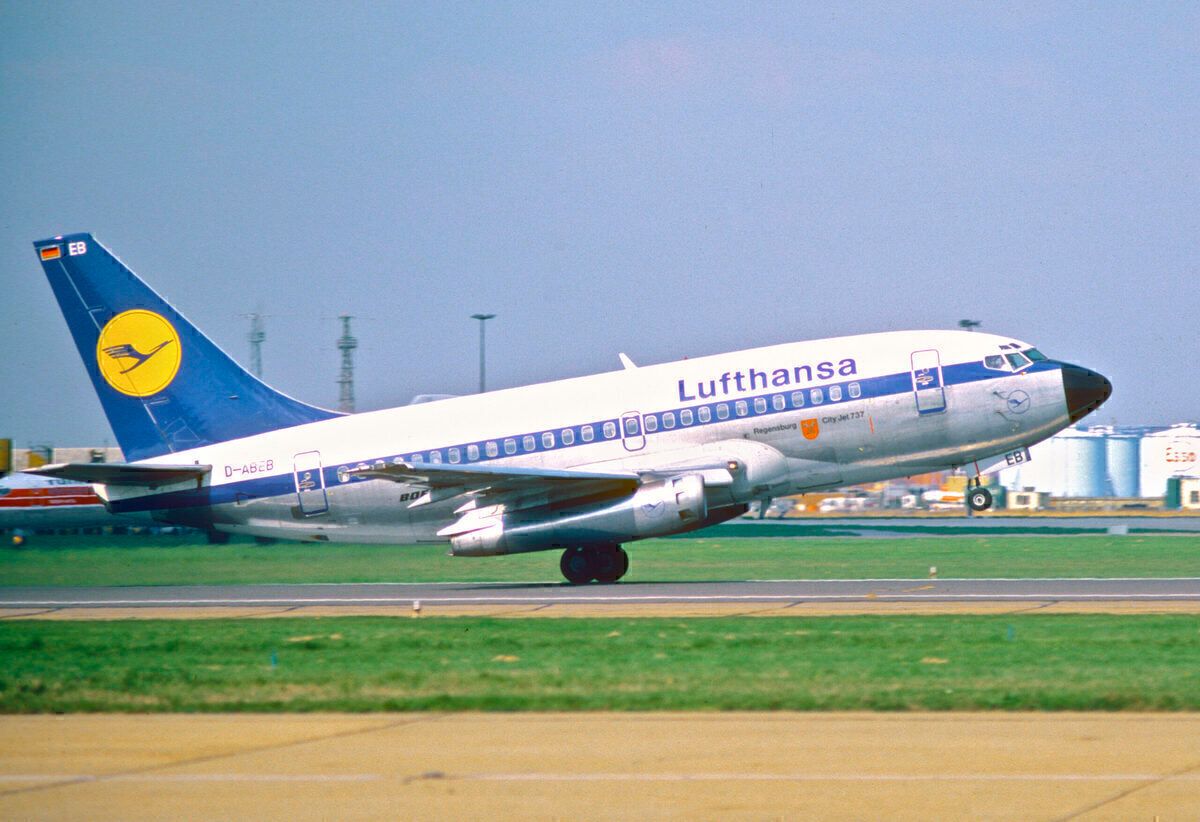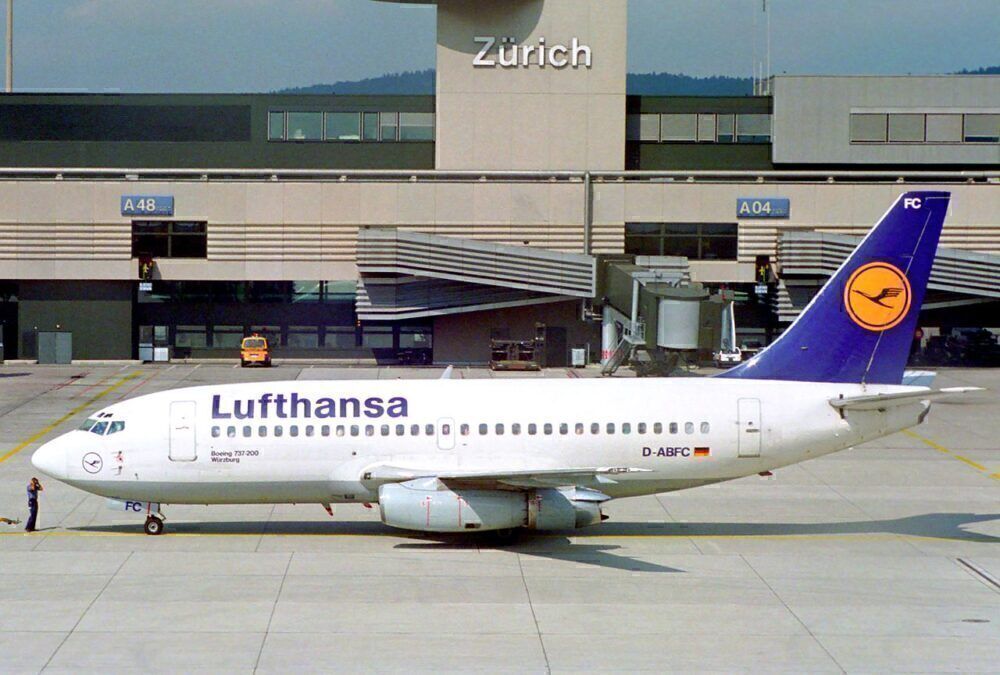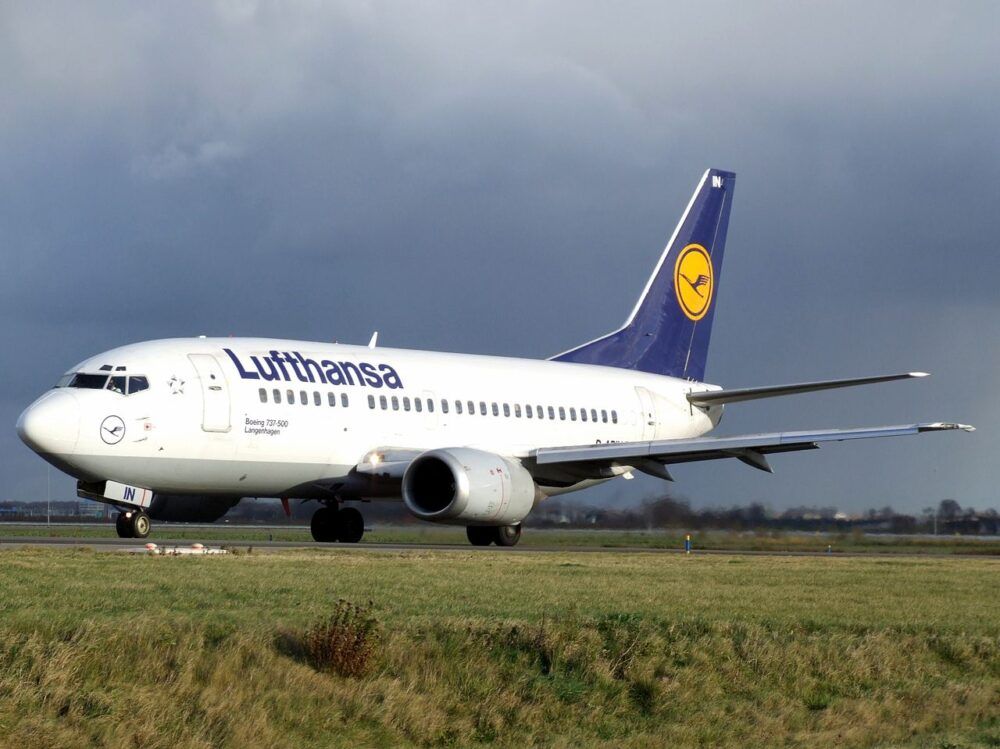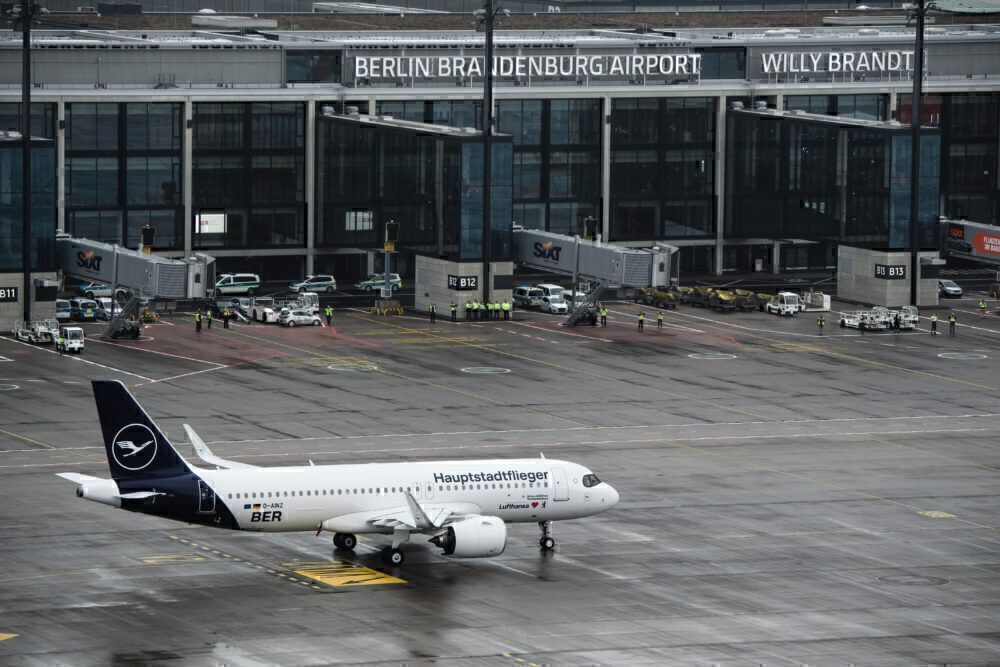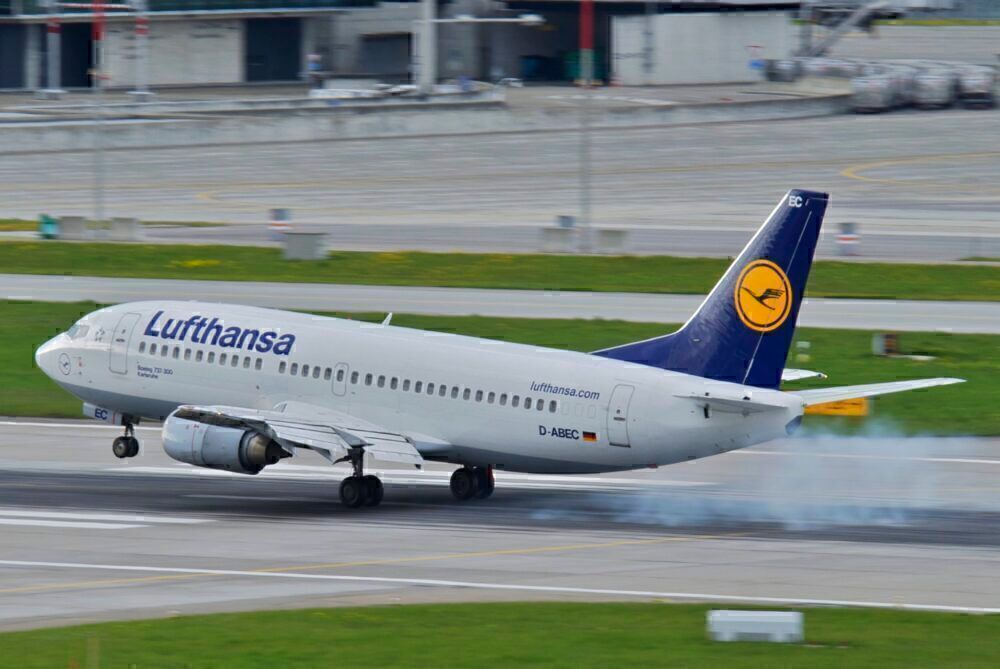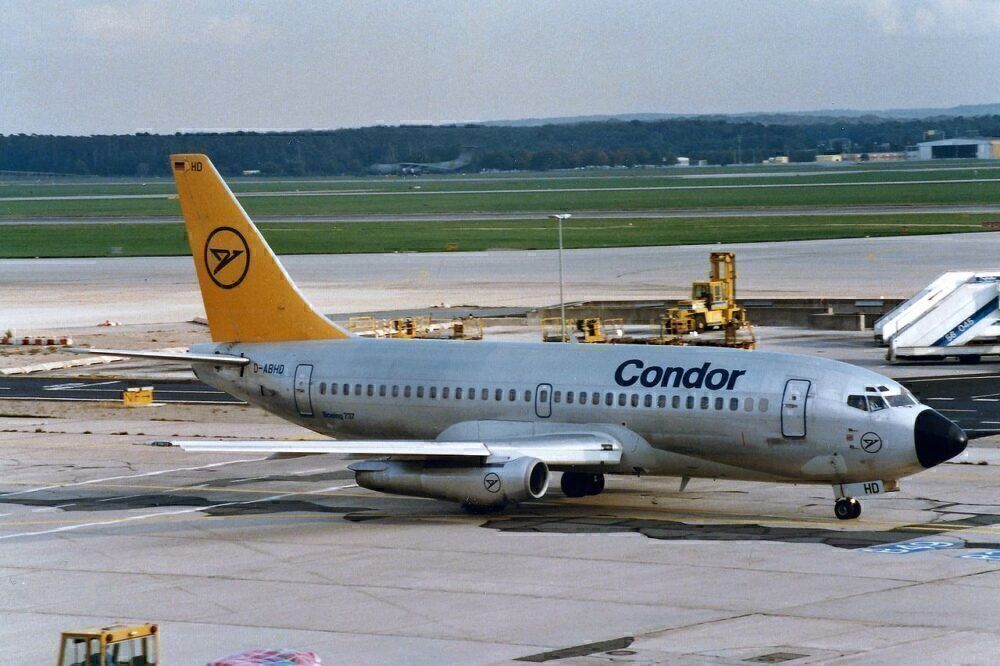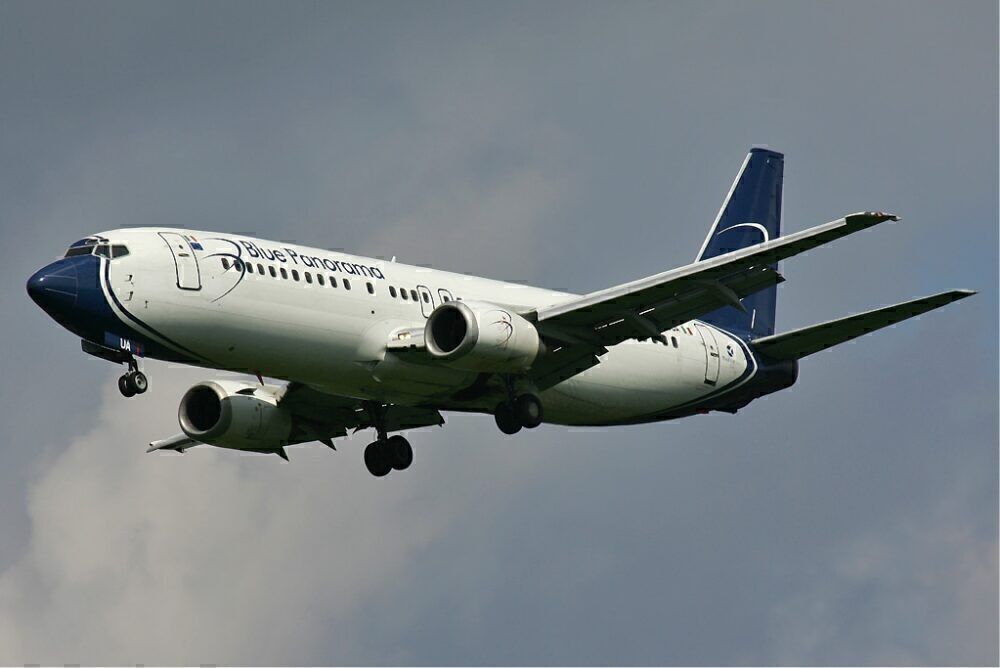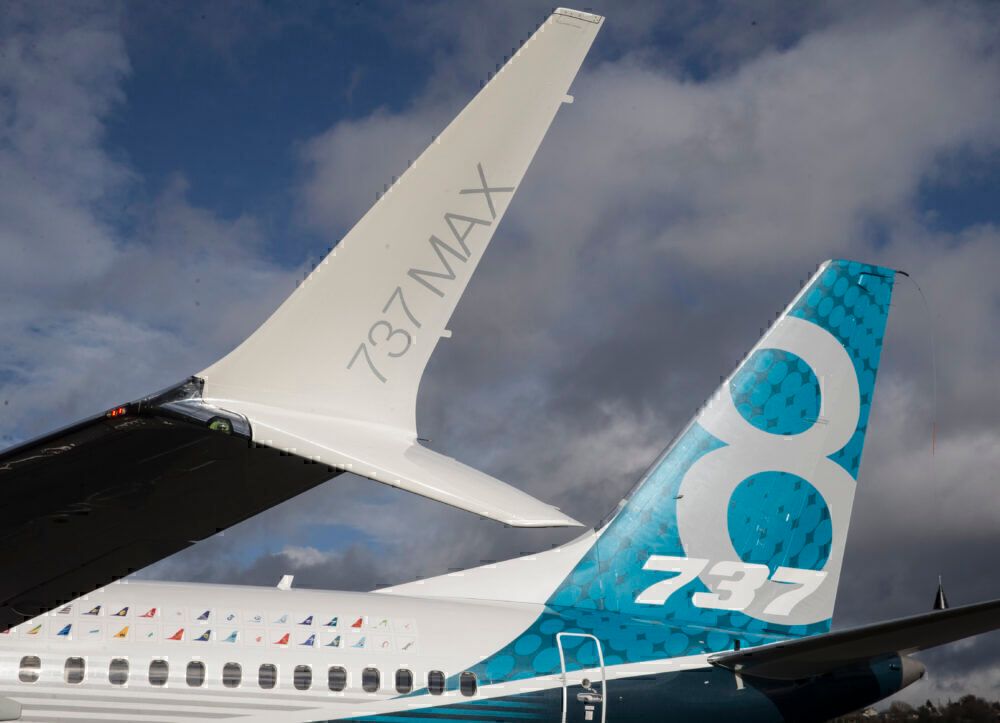Over almost half a century, German flag carrier Lufthansa operated 155 Boeing 737 family aircraft. However, this year will mark five years since the airline took its final flight with the type. But what happened to Lufthansa's American narrowbody twinjets, and where are they today?
Lufthansa and the Boeing 737 Original series
Building on the designs of the 707 and 727, Boeing proposed the concept of a cheaper twin-engine jetliner in 1964. Lufthansa loved this idea, and immediately placed an order for the type. The German carrier became the launch customer of the 737-100 in February 1968.
Over the next three years, Lufthansa would receive a further 21 of the type, making it by far the plane's largest operator. Boeing only produced 30 -100s, meaning that Lufthansa operated nearly 75% of them! Lufthansa's last -100 left the airline in 1982.
The next variant that Boeing produced was the 737-200. This had an extended fuselage compared to the -100, allowing for a greater passenger capacity. Lufthansa eventually ordered and operated 47 examples of this variant. By the slimmest of margins, this made it the most common 737 version in its fleet, and the final example departed the carrier in 1998.
According to Planespotters.net, Lufthansa received its first -200 in December 1969. Its final example arrived in March 1985. However, the airline would receive a handful more in later years, either on a second-hand basis or as they returned to Lufthansa following leases to other carriers.
Stay informed: Sign up for our daily aviation news digest.
The 737 Classic series
The 1980s also saw the launch of the 737 Classic series, which was made up of the -300, -400, and -500 variants. Lufthansa would operate all three of these, with the 737-300 being the most common. In total, it flew 46 examples of the -300, one fewer than its aforementioned 47 -200s.
Just seven -400s, which were the largest variant from the Classic series, flew for Lufthansa. Meanwhile, 33 -500s had a place with the airline. At only 31 meters long, the -500 was the Classic series' smallest example.
Falling out of love
Unfortunately for Boeing, while the 737 Classic series was gripping the market, interest in a competitor aircraft was also on the rise. The Airbus A320 launched in 1984, fast becoming a strong alternative to the 737 family. Being produced in Europe added to its appeal to the German airline, and it began receiving A320-200s in 1989.
Lufthansa went on to operate 100 A320-200s, of which 69 remain in its fleet. It also currently has 29 next-generation A320neo aircraft, of which it was the launch customer in January 2016.
In terms of the A320 family's other variants, these were also popular with the German flag carrier. It has operated 35 smaller A319s, of which 23 remain in its fleet, as well as 64 longer A321s. Lufthansa launched this aircraft in 1994, and it now also has six next-generation A321neo planes in its fleet.
As the A320 became increasingly prevalent in Lufthansa's short-haul fleet, it began phasing out its 737s. Lufthansa operated its last 737 flight on October 31st, 2016. The flight, operated by a 737-300 registered D-ABEC, flew from Hamburg to Frankfurt as a ceremonial final goodbye.
However, the last revenue passenger flight had already taken place two days before, using D-ABEF from Nuremberg to Frankfurt. Half a century of love for the Boeing 737 at the German flag carrier came to an end with these flights.
What happened to Lufthansa’s 737 Originals?
In terms of Lufthansa's 737-100s, we can confidently say that none are around today. There are no 737-100s still in operation around the world, and, apart from a few museum pieces, all have now been scrapped.
Of the 737-200s, a surprising number are still around. While some have been scrapped, some remain in storage, with others even remaining in use today. These can be found among various airlines in South America, such as Colombian cargo carrier Aerosucre. Transporte Aéreo Militar (TAM) also operates two ex-Lufthansa -200s. TAM is a Bolivian Air Force owned airline offering flights to rural communities in the nation.
One ex Lufthansa -200 had a particularly eventful service life. D-ABCE, named Landshut, was the subject of a hijacking by the Popular Front for the Liberation of Palestine in October 1977. This eventually saw the aircraft end up in Mogadishu, Somalia. There, German counter-terrorism police and the Somali armed forces were able to storm the aircraft, rescuing 90 passengers.
It was converted to a cargo aircraft in 1995, and plans have since been drawn up to preserve it at the Dornier Museum in Friedrichshafen. However, one Lufthansa plane did not have such a happy ending. D-ABHD crashed while attempting to land in Izmir, Turkey in 1988, killing all 11 passengers and five crew onboard.
The fates of Lufthansa's 737 Classics
Of the 46 737-300s, 22 were scrapped by Lufthansa at the end of their useful life. 15 were sold to financing firm Automatic LLC, and the rest to other airlines. Some have gone on to be scrapped, and others are in storage.
Despite certain examples being over 30 years old, some even remain in service. Seven were converted to cargo aircraft, while others continue to see active passenger-carrying service worldwide, from Malaysia to Chile.
The -400s, of which Lufthansa had just seven, have had a mixed fate. One has been broken up, five are in storage, and a single example also remains in active service today. This aircraft now flies for Maltese charter airline Air Horizont. It previously flew for Blue Panorama, as you can see below.
15 of the -500s were scrapped by Lufthansa themselves at the end of their service life. Of the other 18, three were sold to Braathens, two are being preserved, and the rest went to Automatic LLC again.
In terms of Lufthansa's two preserved aircraft, the German flag carrier has retained D-ABIA and D-ABJI. One is at Hamburg, and one is at Frankfurt, with both being used for training by Lufthansa Technik. Automatic LLC also went on to see two of its ex-Lufthansa -500s preserved. These aircraft have both ended up 'KidZania' immersive children's play centers. One can be found in Heredia, Costa Rica, and the other in Frisco, Texas.
Coming back to Boeing?
However, there is a potential surprise in store. Despite the Boeing 737 MAX having been grounded, Lufthansa was said to be considering a ‘three-figure order’ of the type back in 2019. In a press conference Carsten Spohr, Lufthansa’s CEO, said,
"We have not lost our trust in Boeing. They’ve built wonderful aircraft over the decades and I am sure they will fix the current issue."
However, the Lufthansa Group was said at the time to be considering both this option, and that of ordering more aircraft from the A320neo family. Either way, it does not change the rich half-century of history that Boeing's popular twinjet has already enjoyed with the German flag carrier.

